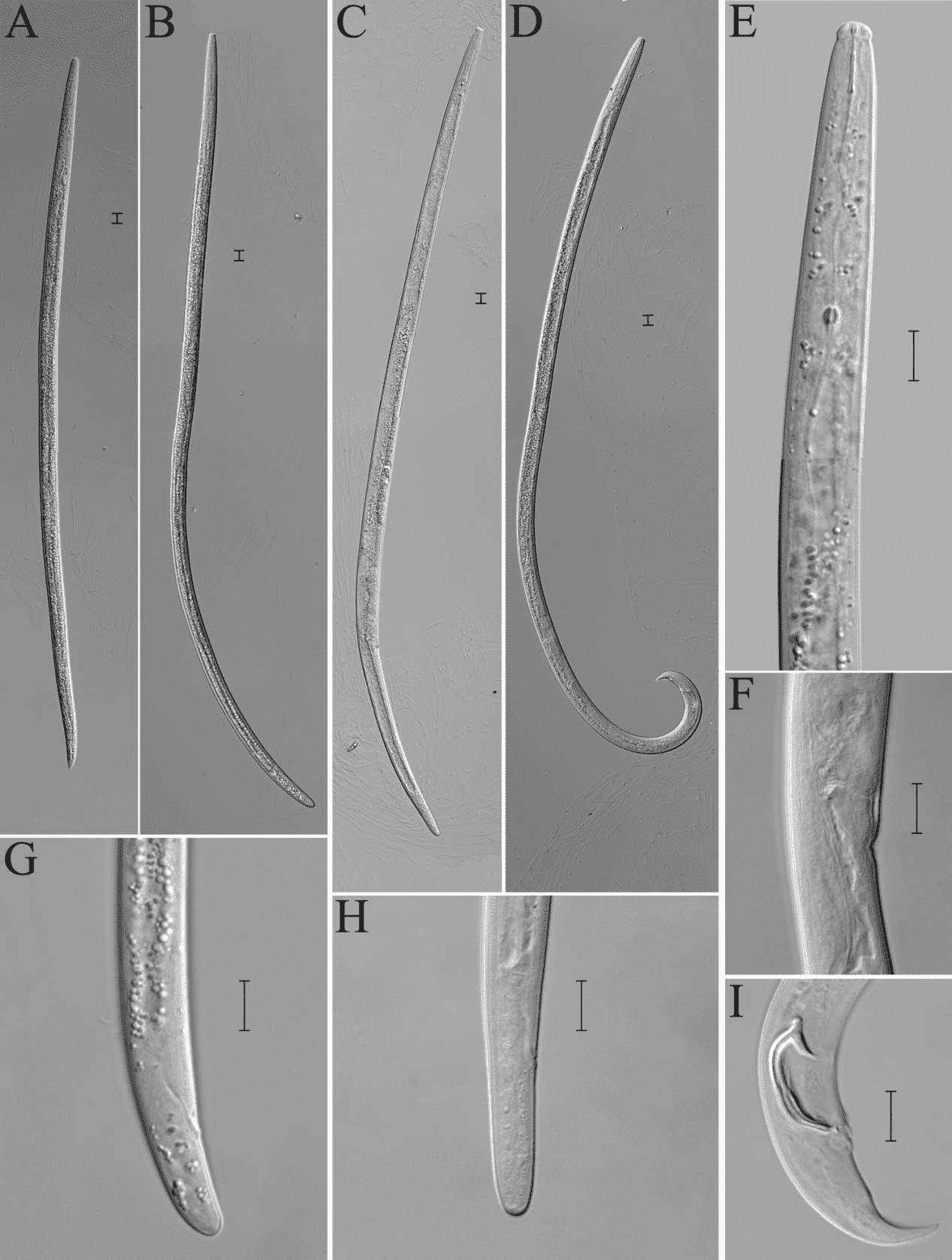Scientific classification
Kingdom:Animalia
Phylum:Nematoda
Class:Secernentea
Subclass:Tylenchia
Order:Aphelenchida
Superfamily:Aphelenchoidoidea
Family:Parasitaphelench
Subfamily:Bursaphelenchinae
Genus:Bursaphelenchus
Species:B. xylophilus
Binomial name:Bursaphelenchus xylophilus

Introduction
Bursaphelenchus xylophilus, commonly known as pine wood nematode or pine wilt nematode (PWN), is a species of nematode that infects pine trees and causes the disease pine wilt.It occurs in much of the United States, Canada, and Mexico. It also occurs in Japan, China, Taiwan, Korea, and Portugal.
Morphology
The adult is slender, about 1 mm long. The tail of the female is nearly conic and the end is round; the tail of the male is like bird claw and bends to the abdomen.
Life cycle
The pine wilt nematode has a typical nematode life cycle, with four juvenile stages and an adult stage with both male and female individuals that reproduce sexually. The mycophagous phase of the life cycle takes place in dead or dying wood, where the nematodes live and feed upon fungi, rather than the wood itself. The nematode cannot travel outside of the wood independently; it must be transported by an insect vector.Xylophilus has the shortest life cycle of any known parasitic nematode. In laboratory studies in which it is cultured on fungal media, its life cycle is completed in four days. In nature it reproduces most rapidly in the summer, producing large numbers of individuals that spread throughout the resin canal system of susceptible pines, into the trunk, the branches, and the roots. If living tree cells are no longer available the parasite feeds and reproduces on the fungal hyphae growing in the resin canals. In the fall and winter the parasite becomes inactive.
Vectors
As soon as the pathogen of nematode was known, Monochamus alternatus, sawyer beetle, it had been one of the noticed insects because this sawyer found frequently dead pine trees, prove the important vector of the nematode and know that the nematode infected healthy pine trees. The nematodes drop off the sawyer, and infect healthy pine tree when the adult sawyers eat the young pine branches.The pine wilt nematode is vectored by a number of bark beetles and wood borers, and is most often associated with beetles in the genus Monochamus, the pine sawyers. Pine sawyers lay their eggs in the bark of dead timber. The growing larva feeds on the wood and pupates in the resulting cavity. Nematodes of the third juvenile stage congregate in the cavity around the pupa, molt into the fourth juvenile stage, and invade the trachea of the adult beetle. During this dispersive stage the beetle transports the nematode to other trees.
Mechanism of wilt and spread
The mechanism from nematode infection to finally pine death is partially unknown now, but the outline has been recognized. The cause of pine death is stopping moving water in the timber. The phenomenon is caused by small bubbles, then air embolism of xylem tissue stops water movement. The embolism doesn’t make tylose or clog the nematode or pine cell. Why the several cavitation and non-reversible embolism occur, is unknown. In primary transmission, when the beetle feeds on a susceptible host pine, the pine wilt nematode enters the tree and feeds on the epithelial cells which line the resin ducts. This is referred to as the phytophagous phase of the nematode, and it results in pine wilt disease. Water transport in the tissues of the infested tree is disrupted, and the disease can manifest within a few weeks. Signs include browning of the needles or yellowing of the leaves, and the tree may die within two to three months.
Management on the field
In Japan, scientists and officers think that the mainstream of prevent this disease is removing sawyers, the vector of the nematode. The sawyers like to spawn at dying or dead pine trees, so they advise to cut down these trees until next spring. Then the timber chipped, burned or sprayed insecticide to kill the sawyer larva and pupa in them. The adult sawyers go out from the timber in late spring or early summer. They start eating young pine branch, and the nematode dropping from the sawyer. Among the two event has a few time lag. So, it is profitable to kill the adult sawyers at this time to prevent the nematode infection to other trees. In Japan, the insecticide to the sawyers use organophosphorus compound or neonicotinoid. For example, fenitrothion, malathion, acetamiprid, and thiacloprid. Some environmentalist warn and oppose to use these insecticide. Bioinsecticides to remove the sawyers are studying. Entomopathogenic fungus, woodpeckers and some parasitoid or prey insects are noticed and continue studying. Embargoes have been placed on untreated lumber from the United States and Canada. Management practices have concentrated on preventing the spread of the nematode. Infected trees are cut and either burned or chipped, soft wood timber is stripped of its bark to prevent oviposition by vectors, and all lumber shipped overseas is either fumigated or kiln-dried. Despite these preventative measures the nematode has been confirmed in Portugal, and may spread in Europe.
